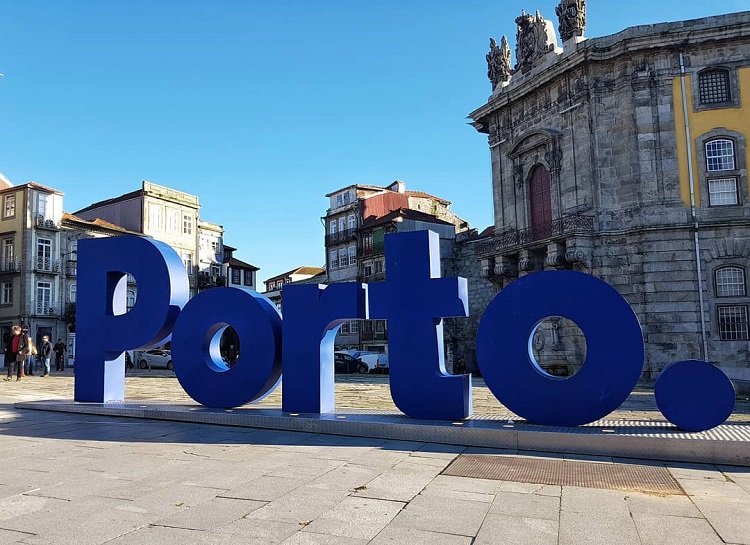Rua da Mouzinho da Silveira visits the old city of Porto streets
One of the most important, long and wide of the old city of Porto streets near the river port is known as Rua da Mouzinho da Silveira. This street is one of the best to go down from Porto to Porto where you can have a nice river cruise. The street is lined with old façades and somewhat neglected tile that gives that characteristic touch and usually has a lot of Portugal. Also this place has several souvenir shops where you can buy a small map of the historical area to get our best bearings.
The streets name is a tribute to José Xavier Mouzinho da Silveira , a statesman and one of the greatest personalities of the liberal revolution .
Mouzinho da Silveira Street is a street with a cross-section of 19 meters and was built in the last quarter of the 19th century, the time of most of its buildings. Its layout was decided at a city council meeting on June 17, 1875 to connect Largo de São Bento (today Praça de Almeida Garrett) to Rua de São João.
It is located in downtown Porto, near S. Bento station and has always been a street marked by commerce. Even today, it maintains the old buildings design, with the various commercial spaces making use of their façades, reminiscent of stores from other times.
This street owes its name to José Xavier Mouzinho da Silveira, a liberal politician, who was born on July 12, 1780.
For the construction of this street, it was necessary to cover the Vila river with a large aqueduct. Its construction required the expropriation of more than 80 plots of dwellings that were located in the area corresponding to its layout, in addition to the demolition of some notable buildings, such as the São Crispim Chapel and the São Roque Chapel. One of the last vestiges of the old Fernandina wall, located near Largo da Porta de Carros, in front of the Congregados Church, was left, leaving only part of the wall that served as a side wall to the São Bento da Avé-Maria Convent.
This important artery of Portos city center was deeply marked by a commercial profile related to the proximity of São Bento Station, having historically fulfilled a role, now outdated, of great importance for supplying the rural areas of Minho and Douro, namely seeds, tillage equipment, saints, scales, corks
The opening of Mouzinho da Silveira Street to connect the upper and lower areas of the city (creating a new axis for the distribution of traffic and movement of goods) was funded by the Imposition of Wine in 1872. It is the street that connects S. Benedict to the Ribeira area, currently the target of recovery of houses that border and along which you can find varied trade. Integral point of the Urban Wine Route route.
Mouzinho da Silveira Street is a street with a cross-section of 19 meters and was built in the last quarter of the 19th century, the time of most of its buildings. Its layout was decided at a city council meeting on June 17, 1875 to connect Largo de São Bento (today Praça de Almeida Garrett) to Rua de São João.
This street owes its name to José Xavier Mouzinho da Silveira, a liberal politician, who was born on July 12, 1780.
This important artery of Portos city center was deeply marked by a commercial profile related to the proximity of São Bento Station, having historically fulfilled a role, now outdated, of great importance for supplying the rural areas of Minho and Douro, namely seeds, tillage equipment, saints, scales, corks
The opening of Mouzinho da Silveira Street to connect the upper and lower areas of the city (creating a new axis for the distribution of traffic and movement of goods) was funded by the Imposition of Wine in 1872. It is the street that connects S. Benedict to the Ribeira area, currently the target of recovery of houses that border and along which you can find varied trade. Integral point of the Urban Wine Route route.
Outros Artigos Populares no Blogue
-


the most beautiful bridges in europe portugal has 2
are essential: they are links between two banks, sometimes between two cultures, two regions, two cities. They are there to transport... -


This is the best city in Europe to visit in 2020
In a list that includes the 12 best cities to visit in 2019, the Culture Trip website placed Porto in second place on the podium. "If 2018 belong... -


There is a secret cave Algar de Benagil in the Algarve that is a true paradise
Situated along the Algarve coast between the tourist destinations of Praia do Carvoeiro and Armacao de Pera, Benagil has for some time also been a fav... -


Loriga Village Portuguese Switzerland
Vila de Loriga is located in Serra da Estrela, about 770 meters high, as if protected by two watchful and haughty sentries that seem to touch the sky,... -


These are the 10 best new restaurants in Lisbon Portugal
Forbes list, which includes ten names in total, is also the Supper at the Santa Clara Hotel 1728, or the Epur, in Chiado, with Vincent Farges, the for... -


Setúbal in Portugal fish market is one of the best in the world
Fish markets around the world can show local fishing but also some of the culture of the area. These are the words of Mark Drabich, president of ... -


Alentejo River Beach voted the best in Europe
Tapada Grande River Beach in the São Domingos Mine, Mértola municipality, was elected for the first time the best European destination i... -


These 5 paradisiacal beaches are just 50 minutes from Lisbon Portugal
Arrabida Port Situated in the Serra da Arrábida Natural Park, Portinho Beach is one of the most beautiful in Portugal. Its fine white san...
